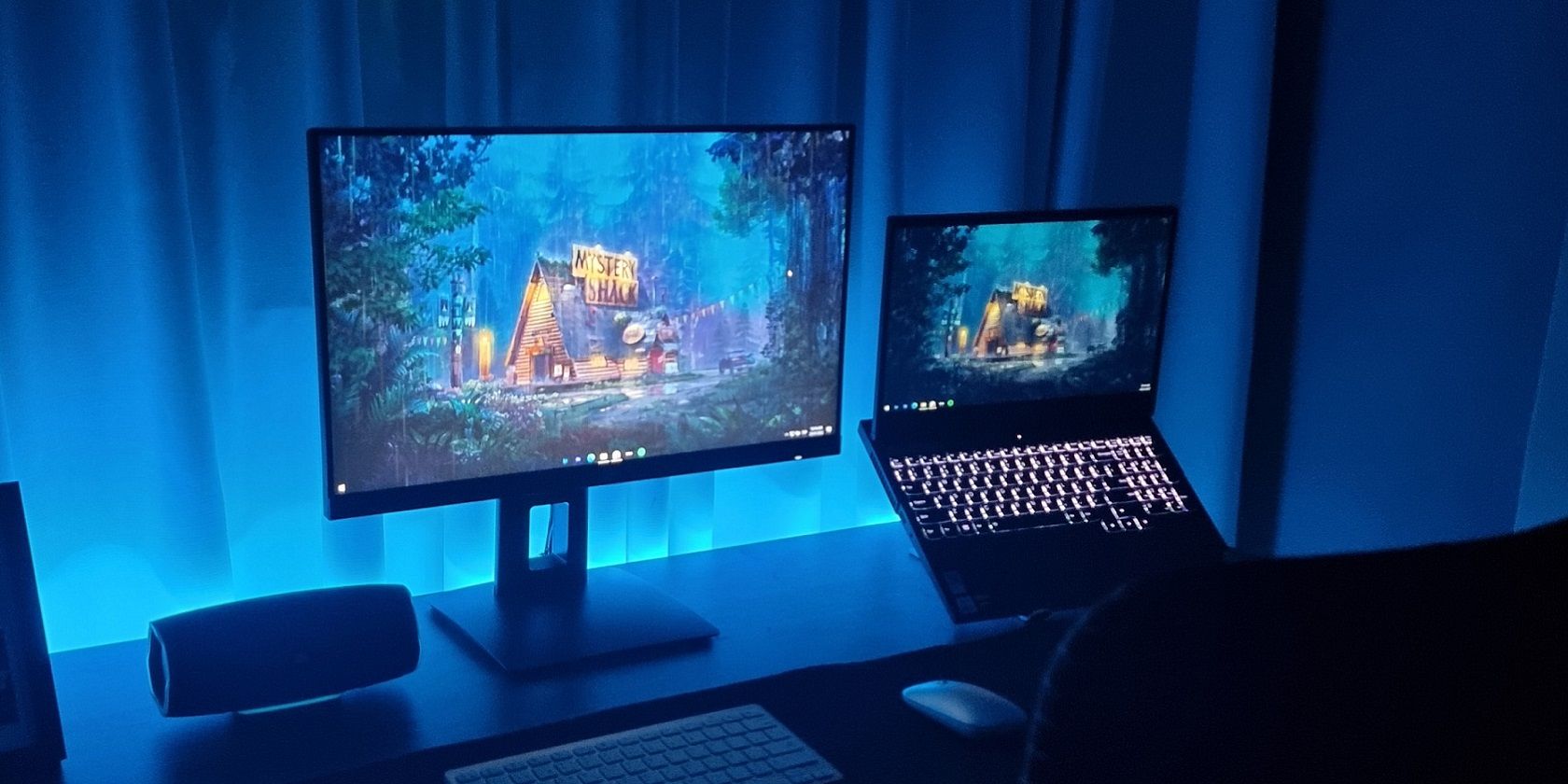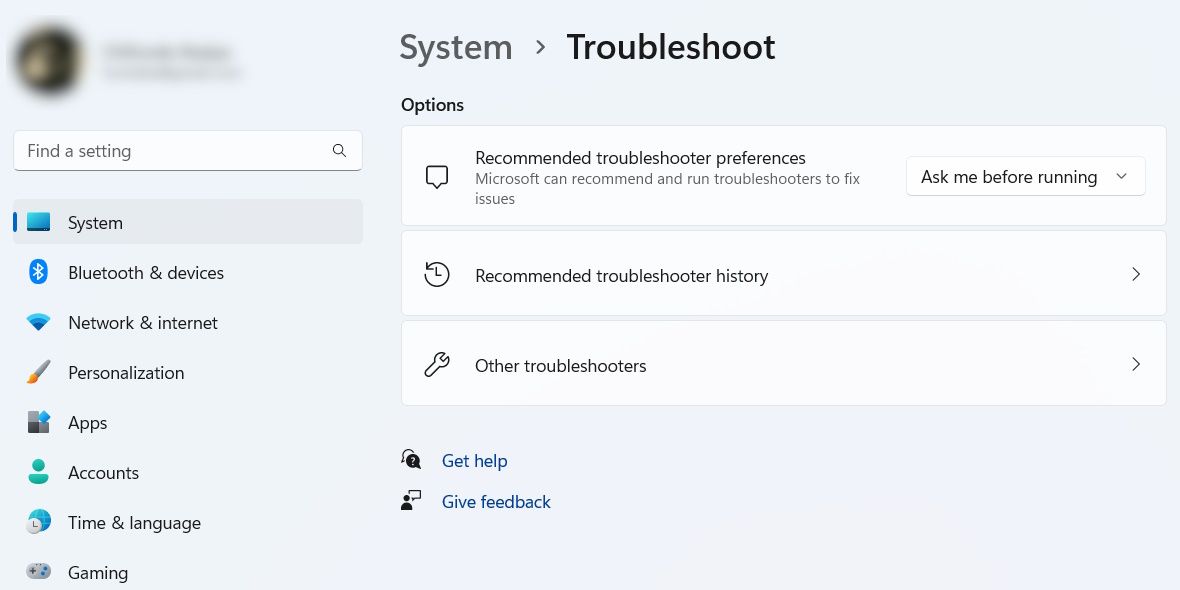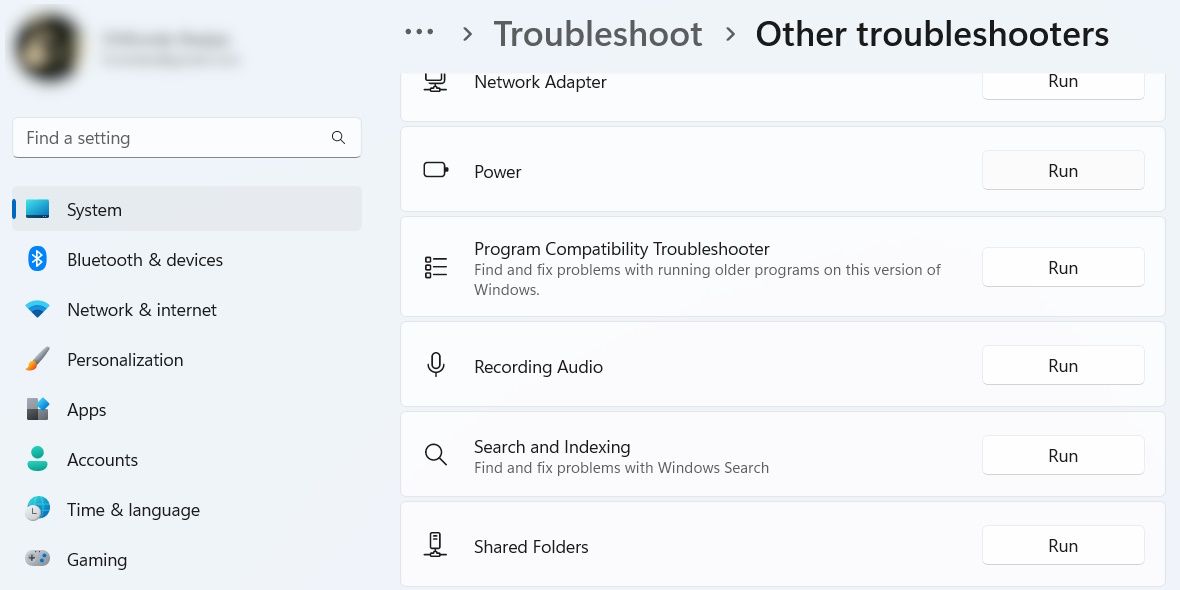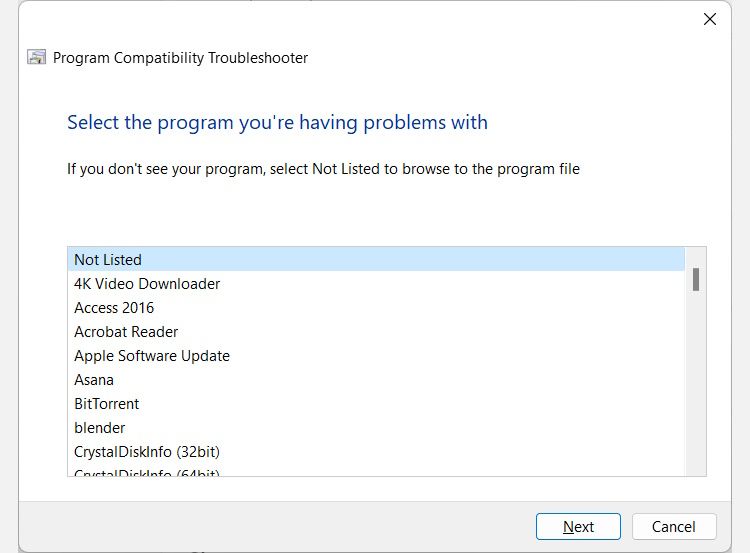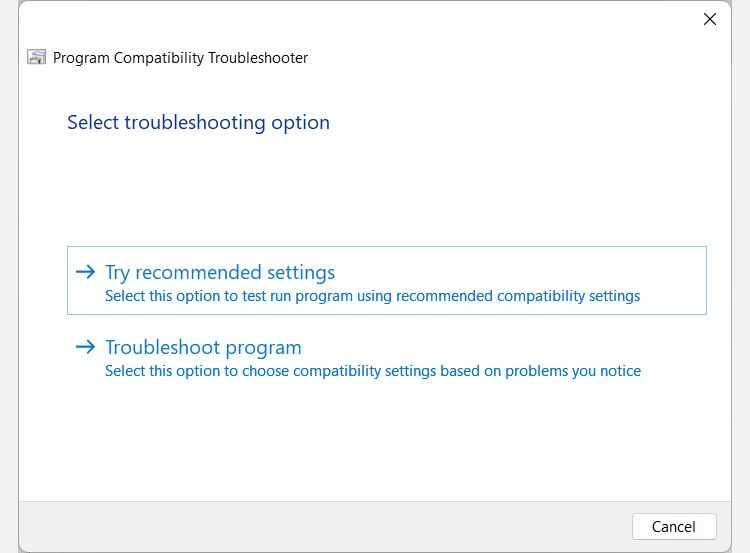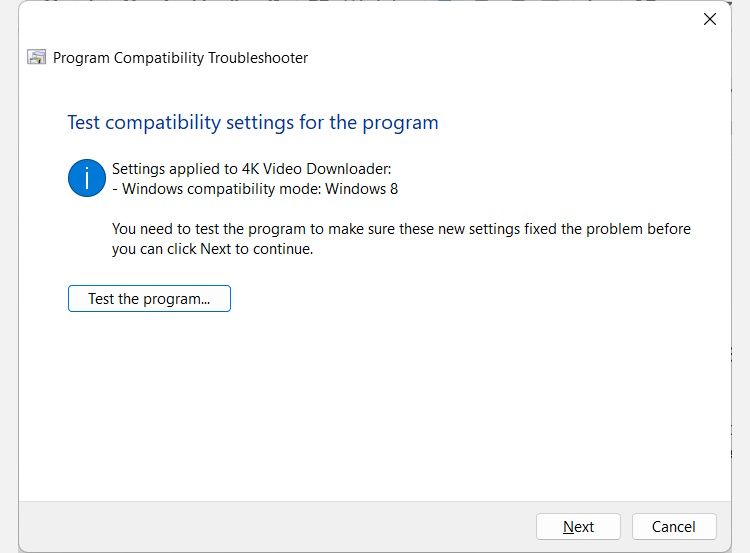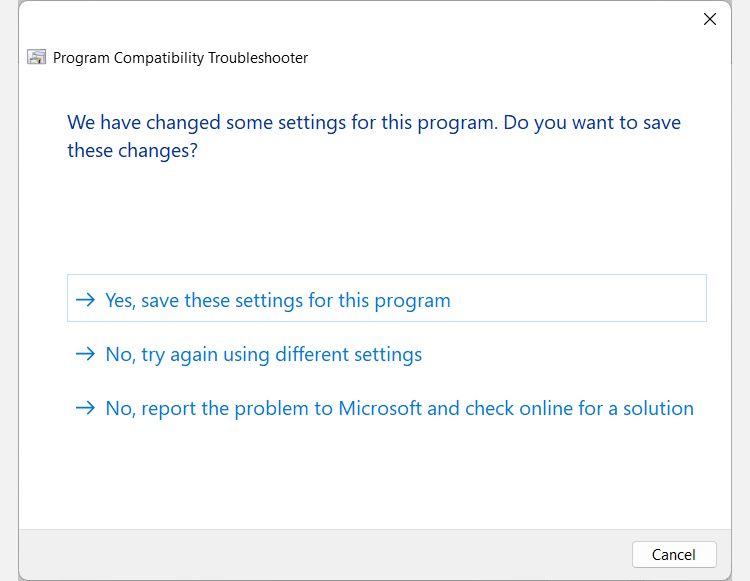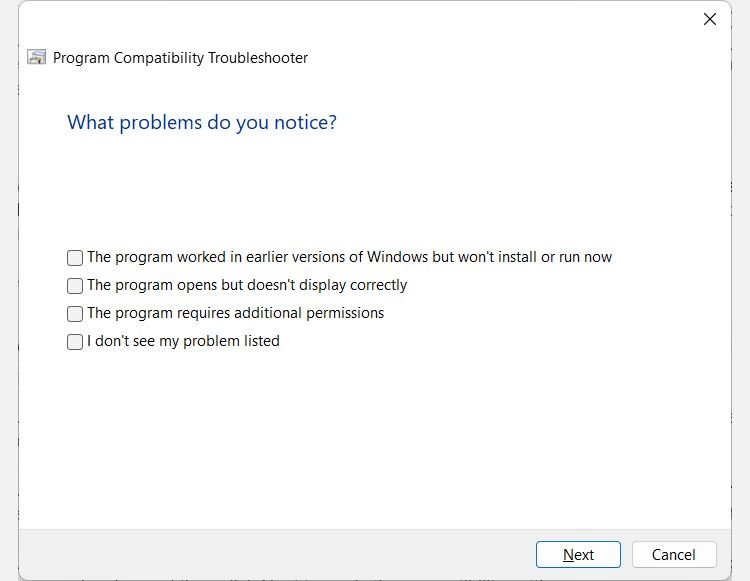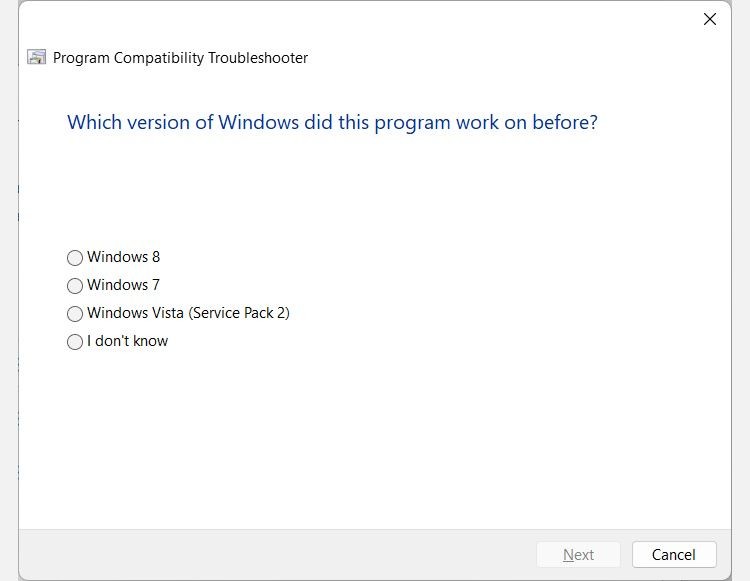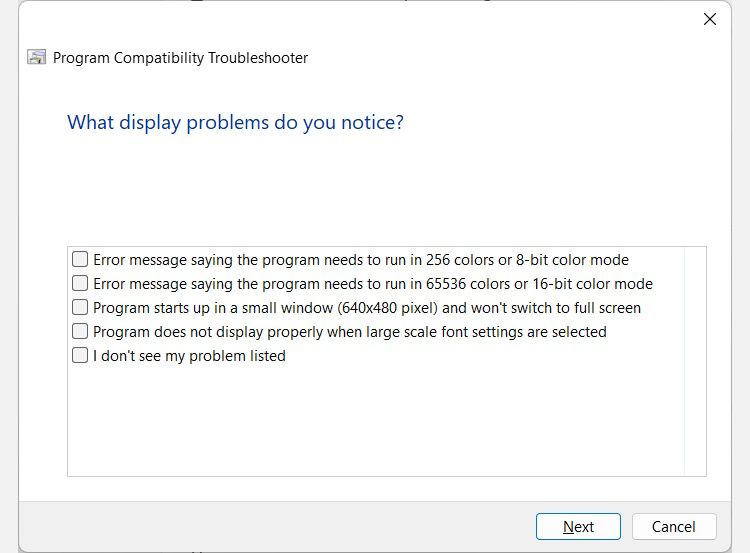Are you running an old app on Windows 11 and experiencing problems? It could be because there’s a compatibility issue that is causing it to misbehave because the program might not support Windows 11.
Fortunately, there’s a tool you can use to get it working properly. It’s called the Program Compatibility Troubleshooter, and we’re going to tell you what it is and how to use it.
What Is the Program Compatibility Troubleshooter All About?
In a nutshell, the Program Compatibility Shooter is a tool on Windows that helps you fix an app that is experiencing compatibility issues. For instance, it can help if an app worked perfectly on Windows 8, but you find that it doesn’t work right (certain graphical elements are glitching out, for example) or is crashing on Windows 11.
Windows 11 has many troubleshooters, and you can read our guide to every troubleshooter on Windows 11 for a brief overview of each one.
With the Program Compatibility Troubleshooter, you run through a series of steps to help the tool identify a particular compatibility issue. And when you do, the tool applies the best settings to the program so it can run smoothly on Windows 11.
How Do I Launch the Program Compatibility Troubleshooter?
To open the Program Compatibility Troubleshooter, follow the steps below:
- Press Win + I to open the Settings app.
- You will automatically land on the System page, and if not, click System on the left side menu.
- On the right side of the System page, click on Troubleshoot.
-
Scroll down and click on Other troubleshooters.
-
You’ll find the Program Compatibility Troubleshooter in the Other section, and to launch it, click the Run button next to it.
For more ways to fire up this tool, please read our guide on the different ways to run the Program Compatibility Troubleshooter on Windows.
How to Pick a Program to Fix in the Program Compatibility Troubleshooter
After you launch the Program Compatibility Troubleshooter, it will search for all the programs that you can troubleshoot and list them for you. Select the program you want to fix, and then click Next. And if the program is not on the list, select Not listed and browse for it.
After the tool analyzes the program, it will ask you to select a troubleshooting option between Try recommended settings and Troubleshoot program.
Let’s see what each of them does.
How to Troubleshoot Compatibility With the “Try recommended settings” Option
If you select Try recommended settings, Windows will apply the best compatibility settings to the selected program based on a previous version of Windows. However, you’ll need to click the Test the program button afterward to launch the app and make sure it’s working as expected. Then, click Next to proceed.
You will then be asked if you want to save the applied settings. If they worked, click Yes, save these settings for this program. If not, click No, try again using different settings – this will be like selecting Troubleshoot program as your troubleshooting option.
Otherwise, click No, report the problem to Microsoft and check online for a solution.
How to Troubleshoot Compatibility With the “Troubleshoot Program” Option
If you select the Troubleshooter program option, you’ll be given a list of problems to choose from. Tick the ones you’re experiencing (you can select more than one), and then click on Next.
If you ticked The program worked in earlier versions of Windows but won’t install or run now, you’ll be required to pick an earlier version of Windows by clicking on the appropriate radio button. Then, click Next to apply the compatibility settings.
If you ticked, The program opens but doesn’t display correctly when choosing a problem, you’ll need to pick the display problems you’re experiencing. Then, click Next to apply the compatibility settings, and, remember, you can pick more than one problem to give the tool more information on how to best optimize it.
If you ticked The program requires additional permissions, the compatibility settings will be applied immediately. And if you pick I don’t see my problem on the list, you’ll be taken to the screen where you have to pick an earlier version of Windows that the program last worked on.
Then, you need to click the Test the program button to see if the problem is gone. Afterward, click Next to proceed.
If the troubleshooter resolved the problem, click Yes, save these settings for this program on the next screen. If it didn’t, click No, try again using different settings to try other troubleshooting steps. If neither option applies to your situation, click No, report the problem to Microsoft and check online for a solution.
Get Rid of Program Compatibility Issues on Windows 11
Now that you have a good idea of what the Program Compatibility Troubleshooter is, you can use it to fix older apps that aren’t working right on Windows 11. It’s much better than waiting for the app’s developers to update it, which might never happen if they stopped working on it.
This is just one of the many troubleshooters you can use on Windows 11. And you can even set up shortcuts for them if you use them frequently.

